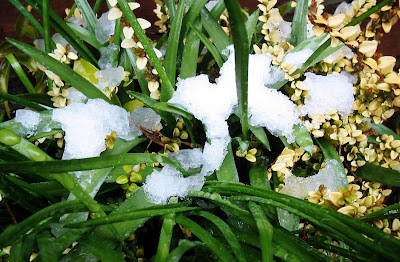Sunday, 30 March 2008
Harold and the pop-up alphabet
Following on from my recent Musings on pop-up books, here’s a much talked-(and blogged-) about forthcoming pop-up alphabet by Marion Bataille, to be published in October.
And if you’re over on YouTube, and have an idle couple of minutes (well 7 mins 6 seconds in fact), do have a look at this 1969 animation of Crockett Johnson’s delightful children’s book, Harold and the Purple Crayon. This was SD#1’s favourite book in all the world when she was a toddler, because purple was her bestest, bestest colour and she was rarely to be found without a crayon (invariable a purple one) in her own little hand.
Everyman, I will go with thee and be thy guide ...
 Finding myself both devoid of anything interesting to say and also somewhat overwhelmed by work (what’s new?) I’ve posted very little here in the last week or so.
Finding myself both devoid of anything interesting to say and also somewhat overwhelmed by work (what’s new?) I’ve posted very little here in the last week or so. However, while performing a little therapeutic sorting out and (gasp!) dusting of my notoriously muddled bookshelves this morning – a displacement activity, given the state of my in-tray, but everyone needs the odd Sunday morning off, I tell myself, self-indulgently - I decided to collect together in one place various vintage tomes I’ve acquired over the years, including all my Dent Everyman Library volumes.
However, while performing a little therapeutic sorting out and (gasp!) dusting of my notoriously muddled bookshelves this morning – a displacement activity, given the state of my in-tray, but everyone needs the odd Sunday morning off, I tell myself, self-indulgently - I decided to collect together in one place various vintage tomes I’ve acquired over the years, including all my Dent Everyman Library volumes.

How many bibliophiles do not boast some of these gorgeous little books in their collections?

Mine include a goodly number from the 1906-1928 series, featuring these most wonderfully elaborate Arts & Crafts-style title pages by Reginald Knowles.
 Although I’ve picked up many in shops and booksales over the years, at least a dozen have been handed down by my grandparents, godmother and great aunt. As young adults in the heyday of the Everyman Library, such forebears would have been absolutely in Joseph Dent’s sights when he conceived the idea of selling well-designed editions of the world’s classics at one shilling a volume, ‘to appeal to every kind of reader: the worker, the student, the cultured man, the child, the man and the woman’, so that ‘for a few shillings the reader may have a whole bookshelf of the immortals; for five pounds (which will procure him with a hundred volumes) a man may be intellectually rich for life.’
Although I’ve picked up many in shops and booksales over the years, at least a dozen have been handed down by my grandparents, godmother and great aunt. As young adults in the heyday of the Everyman Library, such forebears would have been absolutely in Joseph Dent’s sights when he conceived the idea of selling well-designed editions of the world’s classics at one shilling a volume, ‘to appeal to every kind of reader: the worker, the student, the cultured man, the child, the man and the woman’, so that ‘for a few shillings the reader may have a whole bookshelf of the immortals; for five pounds (which will procure him with a hundred volumes) a man may be intellectually rich for life.’ Dent himself had left school at 13, and arrived in London with half-a-crown in his pocket. My grandparents left school at 14 but it was inherent in their view of life, too, that they would continue to ‘better themselves’, and so they did, in various ways. A number of the Everyman volumes in my collection were presented as school and college prizes, but others were clearly purchased in the pursuit of further education. All are worn and well-used, and, in the case of my father’s mother's (who became an English teacher and scandalously refused to retire on her marriage in the 1920s), heavily annotated. How many of those who leave school at 16 now will go on to read Ruskin and Bulwer Lytton and De Quincy, one wonders.
Dent himself had left school at 13, and arrived in London with half-a-crown in his pocket. My grandparents left school at 14 but it was inherent in their view of life, too, that they would continue to ‘better themselves’, and so they did, in various ways. A number of the Everyman volumes in my collection were presented as school and college prizes, but others were clearly purchased in the pursuit of further education. All are worn and well-used, and, in the case of my father’s mother's (who became an English teacher and scandalously refused to retire on her marriage in the 1920s), heavily annotated. How many of those who leave school at 16 now will go on to read Ruskin and Bulwer Lytton and De Quincy, one wonders.
 Since it’s quite possible to scan endpapers while inserting the page numbers into a table of legal cases (and listen to music at the same time – what a model of multitasking I am), I’ve scanned a selection here (the pages below down are from Dent books which are not from the EL but nevertheless show the consistent and continued excellence of the publishers' approach to book design). However, I would urge anyone who’s interested in finding out more about the Everyman Library to visit this comprehensive site , which supplements Terry Seymour's definitive book, A Guide to Collecting Everyman's Library.
Since it’s quite possible to scan endpapers while inserting the page numbers into a table of legal cases (and listen to music at the same time – what a model of multitasking I am), I’ve scanned a selection here (the pages below down are from Dent books which are not from the EL but nevertheless show the consistent and continued excellence of the publishers' approach to book design). However, I would urge anyone who’s interested in finding out more about the Everyman Library to visit this comprehensive site , which supplements Terry Seymour's definitive book, A Guide to Collecting Everyman's Library.

Most of my ELs date from what Seymour calls the 'Flatback Era’ (1906-28) , but the website shows every binding style used until 1976 , as well as those used for overseas editions, and there are illustrations of all the title page designs .
 A recent exhibition, 'The ABC of Collecting Everyman's Library’ at the
A recent exhibition, 'The ABC of Collecting Everyman's Library’ at theUniversity of North Carolina has sparked renewed interest in the original series. And, also online, there's a complete index of titles 1906–1956 here and a guide for collectors here.
 And, of course, despite the demise of J M Dent as an independent publishing house in 1988 (I went for a job interview there in 1987 but luckily took up an offer from Thames & Hudson instead!), the Everyman series has been revived (since 1991) by Orion in the UK and Knopf in the US (the latter is by far the more attractive and informative site).
And, of course, despite the demise of J M Dent as an independent publishing house in 1988 (I went for a job interview there in 1987 but luckily took up an offer from Thames & Hudson instead!), the Everyman series has been revived (since 1991) by Orion in the UK and Knopf in the US (the latter is by far the more attractive and informative site). And what a joy it is to be able to buy, once more, such beautifully designed and well-constructed casebound books with decorative endpapers and silk ribbon markers. Long may they prosper.
And what a joy it is to be able to buy, once more, such beautifully designed and well-constructed casebound books with decorative endpapers and silk ribbon markers. Long may they prosper. Which takes us back to the quote from Milton which adorned the first volume of the Everyman's Library: 'A good book is the precious life-blood of a master spirit embalmed and treasured upon purpose to a life beyond life.'
Which takes us back to the quote from Milton which adorned the first volume of the Everyman's Library: 'A good book is the precious life-blood of a master spirit embalmed and treasured upon purpose to a life beyond life.'
Glady Peto - online at last!





Thursday, 27 March 2008
Monday, 24 March 2008
Hidden Depths
 What I’d very much like to know is this: why, when one is feeling a bit fragile and fancies curling up with a good cosy read, does one’s thoughts turn so readily to crime fiction? Why – of all things - should a good murder mystery feel cosy? What on earth possesses one, when feeling rough, to read a book that’s guaranteed to revolve around the death (often in grisly circumstances) of another human being – possibly several human beings, in fact? Same with telly. Feeling like a good relaxing slump on the sofa? What could be more cosy than doing so in front of a re-run of an episode of Morse or Rebus? New series of Miss Marple? Oooh, goody, that’ll be really cosy. Plenty of stabbings and poisonings – the more the merrier!
What I’d very much like to know is this: why, when one is feeling a bit fragile and fancies curling up with a good cosy read, does one’s thoughts turn so readily to crime fiction? Why – of all things - should a good murder mystery feel cosy? What on earth possesses one, when feeling rough, to read a book that’s guaranteed to revolve around the death (often in grisly circumstances) of another human being – possibly several human beings, in fact? Same with telly. Feeling like a good relaxing slump on the sofa? What could be more cosy than doing so in front of a re-run of an episode of Morse or Rebus? New series of Miss Marple? Oooh, goody, that’ll be really cosy. Plenty of stabbings and poisonings – the more the merrier!Perhaps it's because with a murder mystery we can be pretty sure that the narrative will carry us along whether we actively engage with the plot or not. And there will be be resolution. Maybe it's the reassurance of that certainty which makes a detective novel seem so appealing when one is seeking to escape, briefly, the vagaries of real life.
All rather bizarre if one thinks about it - so it’s probably far better not to.
Suffice to say that last time I needed a bit of therapeutic snuggling under the duvet with a good read and frequent large mugs of tea, I reached for Hidden Depths by Ann Cleeves, which had been sitting in the TBR mountain for a while.
It’s certainly the kind of book which rewards reading straight-off, and I found it very enjoyable in the all the right ways. Cleeves writes in a wonderfully lucid and apparently effortless style. Her characters – even the minor ones – are drawn with psychological and emotional insight. Yes, of course they’re pawns in the skilfully plotted game that Cleeves is playing with her readers and with Detective Inspector Vera Stanhope, but they’re satisfyingly well-rounded pawns.

The book is set on the Northumberland coast (so I found myself back in the landscape of The Sea Lady sooner than I’d expected), and there’s a terrific sense of place and atmosphere. Four of the principal characters are keen bird-watchers, whose varying degrees of obsessive behaviour are convincingly portrayed. When I read more about Ann Cleeves on her website on after I’d finished the book, the reason for such verisimilitude became clear!
Julie Armstrong arrives home late in a taxi, rather the worse for wear from a night out, to discover that her teenage son has been murdered and laid out in the bath, strewn with flowers. Shortly afterwards, a pretty young student teacher is found dead in a rockpool not far away, her body similarly bedecked with flowers. Why is the murderer creating these artistic tableaux with his/her victims?
Inspector Vera Stanhope is in charge of the investigation. What a brilliant character. Overweight, almost beyond caring about her appearance, her diet or her excessive drinking, Vera stomps around in fat sandals, threatening to destroy flimsy chairs and acting just a little bit dim in order to lull her suspects into an immediate sense of their own intellectual as well as physical superiority. She’s just fantastic – and a refreshing twist on the usual dishevelled hard-drinking-damaged-personal-life male detective.

I’m now resolved to read Raven Black , which is the first of a quartet set in the Shetlands won the prestigious Duncan Lawrie Dagger (aka Gold Dagger) Award for the best crime novel of the year in 2007.
Sunday, 23 March 2008
Laziness
 Not the kind of Easter Day one anticipates, with daffodils weighed down by snow and blossom being blown from the trees by icy winds.
Not the kind of Easter Day one anticipates, with daffodils weighed down by snow and blossom being blown from the trees by icy winds. So after a brisk walk with the dog in the stinging cold and a quick visit to Grannie and Grandad's, it was roast beef and Yorkshire pudding and a lazy afternoon with new books, new toys, on-demand chocolate and, for me, a quiet retreat to my study to catch up on a bit of undemanding work (I'm leaving the nasty stuff until tomorrow) and blogging.
So after a brisk walk with the dog in the stinging cold and a quick visit to Grannie and Grandad's, it was roast beef and Yorkshire pudding and a lazy afternoon with new books, new toys, on-demand chocolate and, for me, a quiet retreat to my study to catch up on a bit of undemanding work (I'm leaving the nasty stuff until tomorrow) and blogging. Everyone was too full to bother with a proper tea, so I merely cut and dished out the simnel cake to top up the sugar levels (dangerously high all day, but who cares?) and left it at that. SD#s 1 and 2 have now gone out for a run (in shorts - despite my maternal protestations - brrrrr). Bath time for SD#3 in a minute and then more self-indulgent feet-up time, I suspect.
Everyone was too full to bother with a proper tea, so I merely cut and dished out the simnel cake to top up the sugar levels (dangerously high all day, but who cares?) and left it at that. SD#s 1 and 2 have now gone out for a run (in shorts - despite my maternal protestations - brrrrr). Bath time for SD#3 in a minute and then more self-indulgent feet-up time, I suspect.
Imagine This
 'I remember reading a brilliant quote that holds true, something along the lines of: if opportunity doesn’t knock, then build a door and open it yourself. In my – some would say misguided – quest to see my name in print, I’ve decided to build the door myself.'
'I remember reading a brilliant quote that holds true, something along the lines of: if opportunity doesn’t knock, then build a door and open it yourself. In my – some would say misguided – quest to see my name in print, I’ve decided to build the door myself.'Sade Adeniran couldn't find a publisher for her first novel. In this she is not at all unusual. What makes Sade different, however, is that she not only decided to publish the book herself (that's pretty easy these days), but has done such a good job of marketing it that people have sat up and taken notice. The kind of people - booksellers in particular, but also readers - who usually make a point of avoiding self-published books like the very plague. On the not unreasonable grounds that the good stuff will float to the top eventually and be snapped up by a publisher and hence what sinks is likely to be not worth bothering about.
Well, yes, there is a hell of a lot of self-published dross out there these days, but I think we all know post-JKR that traditional publishers can and do make mistakes. Books fall by the wayside which really deserve better, and Imagine This is is a case in point. So thank goodness that its spirited author was undeterred, built her own door and has marched right through it and won the Commonwealth Writers' Prize for Best First Book in the Africa category. Go girl!
Imagine This takes the form of a journal, written by Lola Ogunwole between the ages of 9 and 19. Lola and her brother, Adebola, are born in London to Nigerian parents. Her mother abandons her children for reasons Lola never fully understands and Lola and Adebola are looked after for a while by English foster parents. Their father then returns and takes his family back to Nigeria. The children are separated and farmed out to live with different relatives. Lola ends up in the village of Idogun, living with people who do not seem particularly to care about her, and whose ways and language Lola does not understand.
Lola’s struggle to come to terms with both the physical privations of her new life but above all her deep sense that she is never accepted nor wanted – let alone loved - by the people who grudgingly allow her to live with them are confided to her journal. As the months and years pass, Lola emerges as a hugely distinctive and lovable character. The chasm between the reader’s perception of the heroine as a bright and sensitive young woman and the woefully ignorant and neglectful treatment meted out to her by her relations – especially her negligent father – drive the narrative along.
At times the relentlessness of the misfortunes which befall Lola can make the book almost unbearably painful to read, yet it never pushes the boundaries of credulity, especially when we are reminded of the political and economic climate in 1908s Nigeria – factors which come to the fore when Lola moves to Lagos. Despite everything, however, Lola’s battle against the odds to get herself an education, to discover why her mother abandoned her, and to become an independent young woman are rewarded by small triumphs – though never quite in the way that she or we expect.
All in all a compelling, rewarding and thought-provoking read. It struck me again and again how readily Imagine This would lend itself to audiobook format – and that is no surprise, really, considering that the author’s writing career has hitherto been as a dramatist - her plays have been performed on Radio 4, and at the Hammersmith Lyric, The Bush and the Riverside Studios in London.

Imagine This is a book I should almost certainly never have encountered had I not read about it on a couple of blogs I visit regularly (Me and My Big Mouth and Crockatt and Powell). So, hooray for the power of the blogosphere, I say.
You can buy Imagine This on Amazon, or, even better, for a signed copy (as well as lots more about the author and her work), visit Sade’s quirky Imagine This website .













































